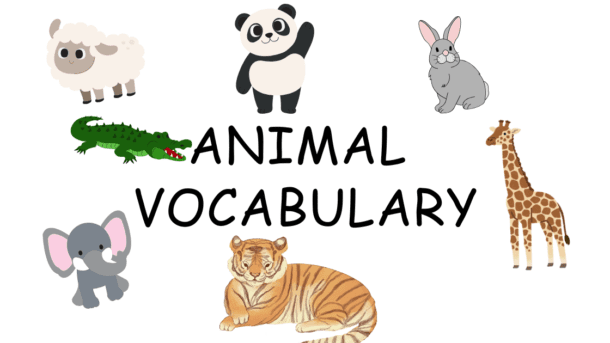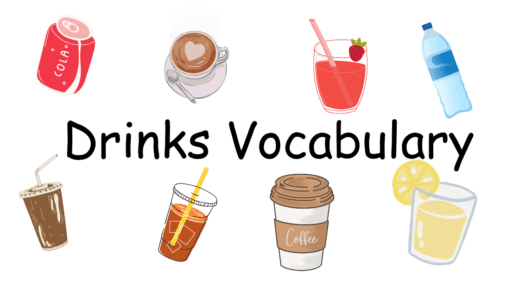Introduction to Animal Vocabulary
Understanding animal vocabulary is essential for English learners, as animals are common subjects in conversation, literature, and various fields such as science, ecology, and even popular culture. This guide will introduce a wide range of animal-related vocabulary, categorized by types of animals, characteristics, and expressions.
Types of Animals
1. Mammals
- Definition: Mammals are warm-blooded vertebrates that have hair or fur and typically give birth to live young (with a few exceptions such as monotremes) and produce milk to feed their young.
- Examples:
- Dog: A domestic animal often kept as a pet. Example: My dog loves to play fetch in the park.
- Cat: Another popular pet, known for its independence. Example: The cat is sleeping on the windowsill.
- Elephant: The largest land animal. Example: Elephants have excellent memories and can live for many decades.
- Whale: A large marine mammal. Example: The blue whale is the largest animal known to have ever existed.
2. Birds
- Definition: Birds are warm-blooded vertebrates characterized by feathers, beaks, and the laying of hard-shelled eggs.
- Examples:
- Sparrow: A small brownish bird commonly found worldwide. Example: I saw a sparrow perched on the fence.
- Eagle: A large bird of prey known for its keen eyesight. Example: The eagle soared high above the mountains.
- Penguin: A flightless bird that lives in cold regions. Example: Penguins are social animals that often live in colonies.
- Parrot: A colorful bird known for its ability to mimic sounds. Example: The parrot can say “hello” in several languages.
3. Reptiles
- Definition: Reptiles are cold-blooded vertebrates that typically have scales and lay eggs.
- Examples:
- Snake: A legless reptile. Example: The snake slithered quietly through the grass.
- Lizard: A small to medium-sized reptile. Example: The lizard basked in the sun on a rock.
- Crocodile: A large aquatic reptile. Example: Crocodiles are known for their powerful jaws.
- Turtle: A reptile with a hard shell. Example: The turtle slowly moved across the sandy beach.
4. Fish
- Definition: Fish are cold-blooded vertebrates that live in water and breathe through gills.
- Examples:
- Goldfish: A small, domesticated fish often kept in aquariums. Example: The goldfish swims in circles in its bowl.
- Salmon: A fish known for its valuable flesh; migrates upstream to spawn. Example: Salmon are found in both fresh and saltwater.
- Shark: A large predatory fish. Example: The shark has sharp teeth and is a top predator in the ocean.
- Tuna: A popular fish for eating and fishing. Example: Tuna can swim very fast in the ocean.
Animal Characteristics and Behavior Vocabulary
- Common Adjectives Related to Animals:
- Fierce: Example: The lion is known for being fierce in the wild.
- Gentle: Example: The gentle giant carefully approached the child.
- Loyal: Example: Dogs are often considered loyal companions.
- Playful: Example: The playful puppy kept chasing its tail.
- Aggressive: A bear can be aggressive if it feels threatened.
- Endangered: The snow leopard is an endangered species due to habitat loss.
- Aquatic: Dolphins are aquatic animals, thriving in ocean environments.
- Behavioral Vocabulary:
- Hunt: To search for and pursue prey. Example: The tiger hunts at night.
- Forage: To search for food. Example: The mother bird foraged for insects for her chicks.
- Migration: The seasonal movement from one region to another. Example: Many birds migrate south for the winter.
- Hibernate: To spend a prolonged period in a dormant state. Example: Bears hibernate during the cold winter months.
Farm Animal Vocabulary
- Farm Animals:
- Cow: A large domesticated ungulate. Example: The cow grazed peacefully in the field.
- Pig: Known for scavenging and rooting. Example: The pig rolled in the mud to stay cool.
- Sheep: Raised for wool and meat. Example: The sheep bleated softly in the meadow.
- Chicken: A common poultry bird that lays eggs. Example: The chicken clucked and pecked at the ground.
- Characteristics:
- Docile: Example: The docile cow allowed the farmer to pet it.
- Hardy: Example: Chickens are often hardy animals that adapt well to various environments.
Wild Animals Vocabulary
- Wild Animals:
- Lion: Known as the king of the jungle. Example: The lion roared to assert its territory.
- Tiger: A large feline with striped fur. Example: The tiger stalked its prey in the tall grass.
- Giraffe: The tallest land animal with a long neck. Example: The giraffe reached high into the trees to eat leaves.
- Bear: A large omnivorous animal. Example: The bear foraged for berries in the forest.
- Anatomy and Features:
- Fur: The soft covering of many mammals. Example: The cat’s fur was soft and fluffy.
- Feathers: The covering of birds. Example: The peacock displayed its colorful feathers.
- Scales: The protective outer layer of reptiles and fish. Example: The fish’s scales shimmered in the water.
Descriptive animal Vocabulary
Using adjectives to describe animals can provide more detail and create vivid imagery. Here are some adjectives commonly used with animals:
A. Size
- Small – E.g., “The mouse is small and quick.”
- Large – E.g., “The whale is a large marine mammal.”
B. Color
- Brown – E.g., “The horse is brown.”
- Striped – E.g., “The tiger has striped fur.”
C. Behavior
- Loyal – E.g., “Dogs are known for being loyal companions.”
- Aggressive – E.g., “The aggressive dog barked loudly.”
Idiomatic Expressions Involving Animals
English has many idiomatic expressions incorporating animal imagery, which can add richness to language. Here are a few popular examples:
- “Curiosity killed the cat”: This phrase means that inquisitive behavior can lead to trouble.
- “The early bird catches the worm”: This suggests that those who act quickly or early have an advantage.
- “Don’t count your chickens before they hatch”: This means one should not assume success before it has happened.
- “You can’t teach an old dog new tricks.”: This suggests that it is difficult for someone to learn new skills or habits.
Basic Animal Care Vocabulary
When discussing pets or livestock, it’s important to know basic terms related to their care.
- Feeding: Providing food to animals.
- Grooming: Cleaning and maintaining an animal’s fur or feathers.
- Training: Teaching an animal specific behaviors or commands.
- Vet: A veterinarian who provides medical care for animals.
List of English names for domestic animals
bird
cat
dog
ferret
fish
gerbil
guinea pig
hamster
lizard
mouse
rabbit
rat
snake
turtle
alpaca
cow
chicken
donkey
goat
hen (female chicken)
horse
llama
mule
ox
pig
rooster (male chicken)
sheep
Bird name
blue jay
cardinal
chickadee
crow
dove
duck
eagle
falcon
flamingo
goose
hawk
hummingbird
ostrich
owl
parrot
pigeon
robin
seagull
sparrow
swan
turkey
vulture
woodpecker
Plural forms of English animal words
As you probably know, in English, you add an –s or –es to make a noun plural. There are some animal names, however, that don’t change when they’re plural. For example, you say fish if there is one or a whole school of them! If you say fishes, it typically means you are referring to different species of fish. Other animal words that do not change in the plural form include:
sheep/sheep
deer/deer
moose/moose
buffalo/buffalo
shrimp/shrimp
Conclusion
Animal vocabulary in English encompasses a wide range of words that describe various species, their characteristics, and their behavior. Understanding this vocabulary not only enhances communication but also enriches one’s knowledge about the animal kingdom. By learning specific terms and examples, English learners can improve their conversational skills and comprehension in both casual and academic contexts.




